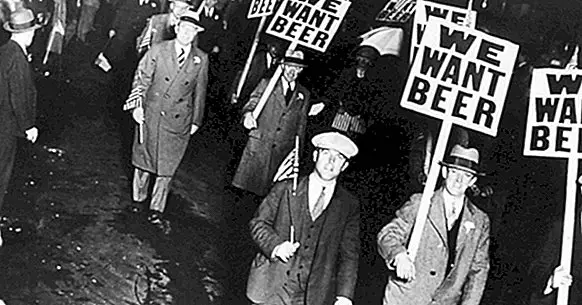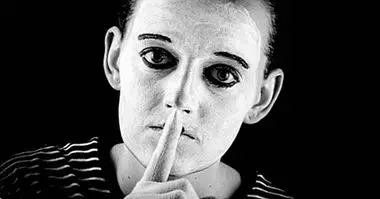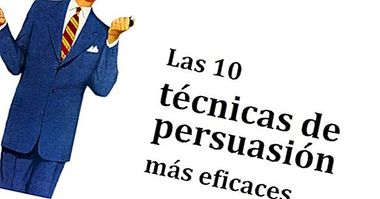The 7 differences between liberals and conservatives
Liberalism and conservatism, two philosophies that include political, economic, social and cultural aspects, are currently confused because of their frequent association in the same individuals and political movements. However, from a theoretical and historical point of view both ideologies are opposed in many key points.
In this article we will describe the main differences between the perspectives of the conservatives and those of the liberals . It is important to bear in mind that it is not the only political philosophies, but there are other very influential ones such as socialism, anarchism and authoritarianism. The union of several ideologies is extremely common.
- Related article: "The 10 types of values: principles that govern our lives"
What is conservatism?
In political science, the term "conservatism" refers to ideologies that focus on the conservation of social institutions of a given group , which can be framed in abstract concepts such as "nation" or in more concrete ones, such as States. It is also very common that conservatism is related to religion.
Throughout history there have been innumerable forms of conservatism, given that its manifestations depend on the characteristics of the sociocultural, temporal and geographical context in which they occur. However, conservative movements tend to have a vision of the human being and society that defends itself as "natural".
Conservative people tend to reject behaviors and ideas that do not correspond to the social norms they defend: those that are associated with the majority culture in a specific geographical area. A) Yes, conservatism defends tradition , which is understood as a way to preserve the social structure and stability.
The radical side of conservatism is made up of reactionary movements that oppose change and defend the recovery of "traditional values" that in many cases have practically disappeared in the present moment. This is the case of anti-abortionist currents that have had some political success in Spain in recent years.
- You may be interested: "The philosophical theory of Edmund Burke"
Defining liberalism
Liberalism, at least in its most representative variant, emerged in Europe in the eighteenth century, in the context of the Enlightenment. At that time the main characteristic of the liberals was their rejection of established norms defended by conservatives , among them the absolute monarchy, the union between State and religion or the division of society into classes.
Currently the term "liberalism" is confused by the multiple uses that have been given. Predominate the conception of liberalism in its economic side (which defends the nonintervention of the State in the markets) and the American nomenclature, which is associated with progressivism; nevertheless, classical liberalism includes many different aspects.
What the different conceptions of liberalism have in common, whatever the priority aspect (economic, social, political and religious are some of the most important), is that they defend individual freedom in some of its facets . Thus, a social liberal could defend the homosexual marriage and an economic one the minimization of the taxes.
Currently there is an evident conflict between economic and social liberalism . The alliance between free market supporters, conservatives and state apparatuses increasingly harms individual rights, equality between people born in different social classes or freedom of opinion, fundamental aspects for classical liberals.
Differences between liberals and conservatives
The differences between liberalism and conservatism They cover a wide range of facets, from the ethics or vision of the human being to the conception of the State and the social structure. In any case, it is very common for conservative and liberal ideas to coexist in the same people, as is the case with other political philosophies.
Probably the most significant common ground between these two ideologies is that both support the primacy of private property over public . This characteristic, which is opposed to the approaches of socialism or those of social democracy, explains to a large extent the alliances between conservatives and liberals.
1. Tradition and change
Conservative people consider that maintaining traditions and social norms is fundamental to the health of society; this makes them reluctant to change, which can have negative consequences. Instead, Liberalism is opposed to any obstacle that prevents individual freedom and it has as an ideal the progress of humanity.
2. Individuality and collectivism
While conservatism is associated with the structuring of society according to the groups that compose it, such as families, for liberalism the individual is the basic human unit. In this sense, there is a clear mistrust regarding conformity with social norms and the subordination of minorities with respect to majorities.
- You may be interested: "Is a person's IQ related to their political ideology?"
3. Personal freedom and civil rights
The basic value of liberalism is, as its name suggests, freedom; however, the way in which this concept is understood depends to a large extent on personal and ideological factors. In this sense historically they have defended social rights much more than conservatives although, again, there are many forms of conservatism.
4. Social structure and mobility
In general, conservative approaches propose that a certain social stratification, associated with historical and practical factors, is the natural and desirable state of human groups - at least of their own. On the other hand, for liberalism the social structure must depend on the skills and economic success of each individual.
5. Religion and moral values
In liberalism, the religious freedom of individuals prevails; the same happens with moral values, which should not be imposed on others beyond minimums preferably determined by society as a whole. In contrast, conservatism often uses religious morality as a tool of cohesion and social control .
- Related article: "The 4 differences between moral, immoral and amoral"
6. Nationalism and internationalism
In the conservative ideologies, the exaltation of tradition, shared values and the identity of a given group are combined in a natural way; this often leads to nationalism and protectionism. Liberals tend to defend internationalism and the minimization of trade restrictions worldwide.
7. Vision of the State and democracy
From a political point of view, liberals believe that the size and weight of the State in the functioning of society should be limited to the maximum; They also defend democracy and equality in the right to vote. Conservatism may be associated with an even greater rejection of the State , prioritizing the class structure and therefore the oligarchical tendencies.



















